East Coast sunrise spectacular
FLYING Scotsman – the locomotive which has the uncanny ability of writing world transport history without a second thought – has done it again.
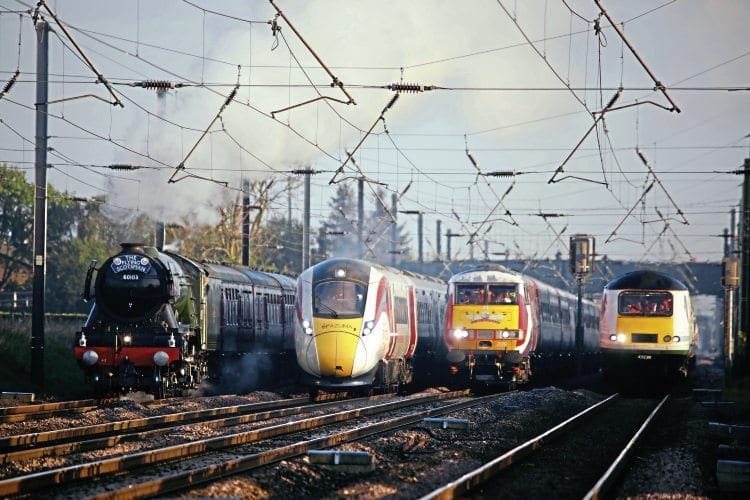
As helicopters circled overhead, global headlines and newsreel footage were generated on a steady production run after dawn on Sunday, April 23, when No. 60103 stood to the left of three of its East Coast Main Line successors – but still managed to take the centre stage podium.
A unique world-first event saw Network Rail’s works delivery department at Doncaster take possession of all four ECML tracks from Tollerton into York, so two of the trains could run in the “wrong” direction alongside the other two.
Enjoy more Heritage Railway reading in the four-weekly magazine.
Click here to subscribe & save.
The aim was to promote the forthcoming latest state-of-the-art trains on the ECML – the Class 800 Virgin Azuma.
Tornado hits 101mph!
AT 3.42am on Wednesday, April 12, a new pinnacle of railway heritage was reached – when £3 million new-build Peppercorn A1 Pacific No. 60163 Tornado reached 101mph during a 90mph proving run.
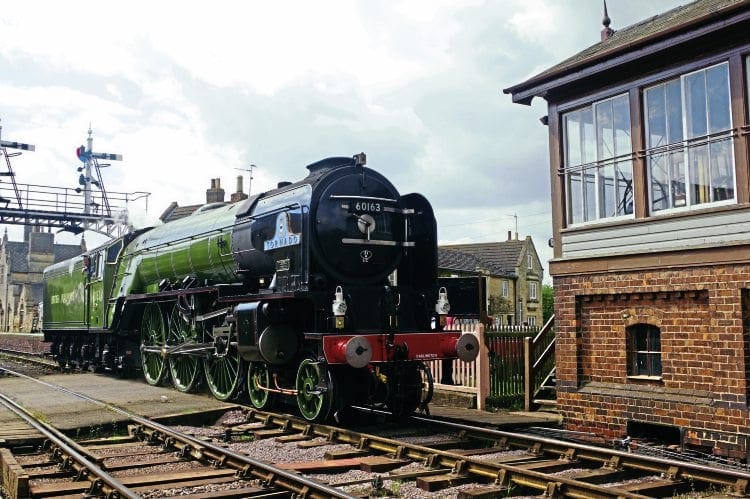
With a select group of invited guests on board the nine-coach train, the locomotive was undertaking tests between Doncaster and Newcastle in view of raising its permitted maximum speed to give more flexibility to future charter planning.
Tornado is currently limited to 75mph but builder and owner the A1 Steam Locomotive Trust wants to lift the maximum speed to 90mph to increase flexibility in scheduling its tours on
the network.
The tests were organised in partnership with DB Cargo Rail and Network Rail and took place with rail industry engineers and certification bodies monitoring the trial.
Now let’s help Llangollen Railway go to town too!
THE heritage railway community is being invited to do for the Llangollen Railway what it has just done for the Gloucestershire Warwickshire Railway – and give it a new town centre destination.
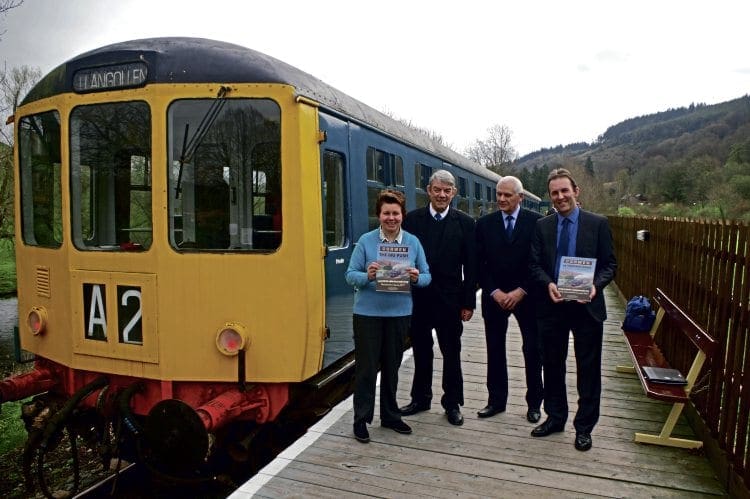
On April 7, I joined a party of invited guests including Clywd South Labour MP Susan Elan Jones for a ride on a DMU special from Llangollen to view for ourselves the work being done on building a new permanent terminus and run-round loop at Corwen.
Her visit coincided with the launch of ‘The Big Push’, a major fundraising initiative with the aim of having the new Corwen Central on line by 2018.
The overall cost of the project is estimated at around £750,000 (two thirds of that for materials), and officials remain hopeful that part of that sum will be covered by grant aid from the Welsh Government European Development Fund. The remaining funds must come from share purchases and donations.
The offer of £1 shares in Llangollen Railway plc is intended to raise £370,000, while also backing donations to the Llangollen Railway Trust.
Robert Riddles
Concluding the series on the Big Four CMEs, Brian Sharpe examines the career of Robert Riddles who became CME of British Railways after Nationalisation and undoubtedly prolonged the steam era in Britain with a series of steam designs that many argue should never have been built.
Robert Riddles was born in 1892 and joined the LNWR at Crewe works as a premium apprentice in 1909, completing his apprenticeship in 1913. While attending the Mechanics Institute classes he took a course in electrical engineering, feeling there would be a future for electric traction. During the First World War he served with the Royal Engineers, mainly in France, during which time he was badly wounded.
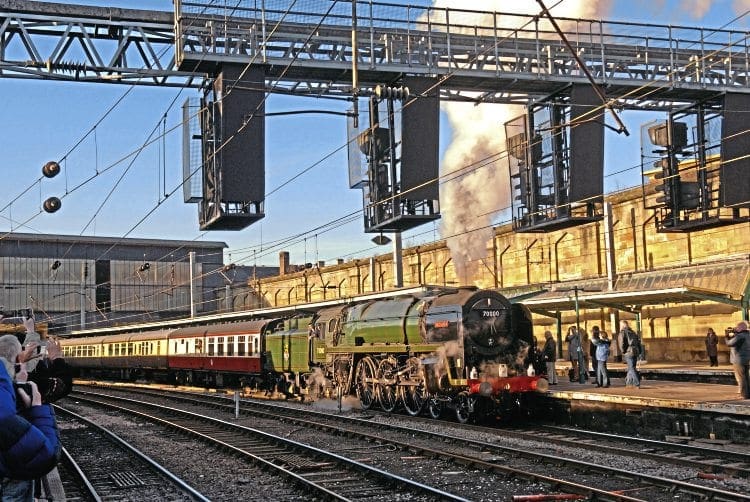
He returned to the LNWR at Crewe, and in 1920 became the bricks and mortar assistant with responsibility for the new erecting shop. When work on this was stopped, Riddles was placed in charge of a small production progress department and was sent to Horwich to study the methods used by the L&Y. This was to prove helpful in furthering Riddles’ career and he was to have significant influence in the reorganisation of Crewe works which took place between 1925 and 1927 after the Grouping. In 1923 the LNWR had become part of the LMS and on completion of the work at Crewe, Riddles was sent to the former Midland works at Derby to supervise a similar programme. He was supported in this process by Henry Ivatt who was the works manager at Derby.
Flying Scotsman’s magnificent month
Tornado may have run at more than 100mph, emulating Flying Scotsman’s world record feat of 1934, but its crowd-pulling April tour proved that it is not ready to concede its crown as the world’s most famous steam locomotive to the young pretender yet!
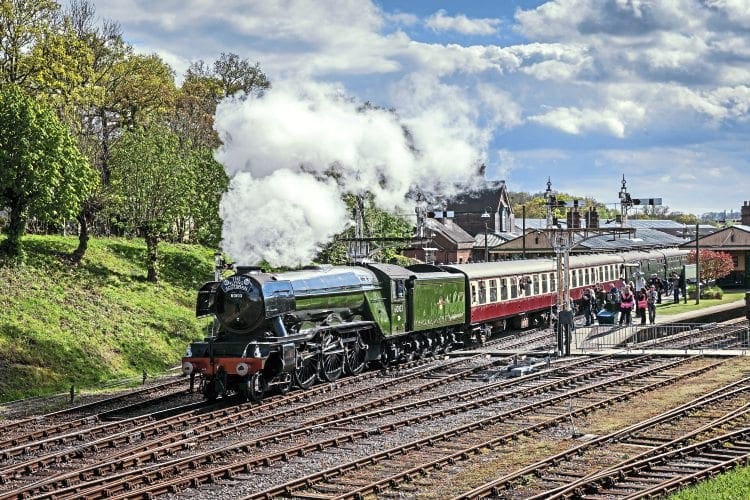
The seven-day Easter gala visit of LNER A3 Pacific No. 60103 Flying Scotsman to the Bluebell Railway gave the Sussex line a much-needed spring boost, following heavy expenditure of over £500,000 on three track replacement projects during last winter.
Laying over at Southall for servicing after travelling from Keighley, the locomotive and its support coach steamed into East Grinstead via the national rail link early on April 12, its path having been cleared from gauging issues at Dormans by Network Rail contractors in March.
Bluebell Railway Preservation Society vice-president, Roy Watts said: “For me it all began at 1.30am, having been the nominated person to open the boundary gates and see Scotsman onto Bluebell Railway metals.
“The whole process was undertaken and achieved – bar a small slip of the loco – as quietly as possible to avoid disturbing our neighbours.
“It was when it paused by the ground frame and, looking up, became completely framed by the full moon that could you appreciate the majesty of the loco!
“With the gauging complete, the sound of the loco working south towards Kingscote carried across the quiet countryside.”
Liassic lives on!
The Statfold Barn Railway is noted for its rapid overhauls of rare narrow gauge locomotives. Mark Smithers reports on the return to steam of an engine once thought unlikely to ever appear in Britain again.
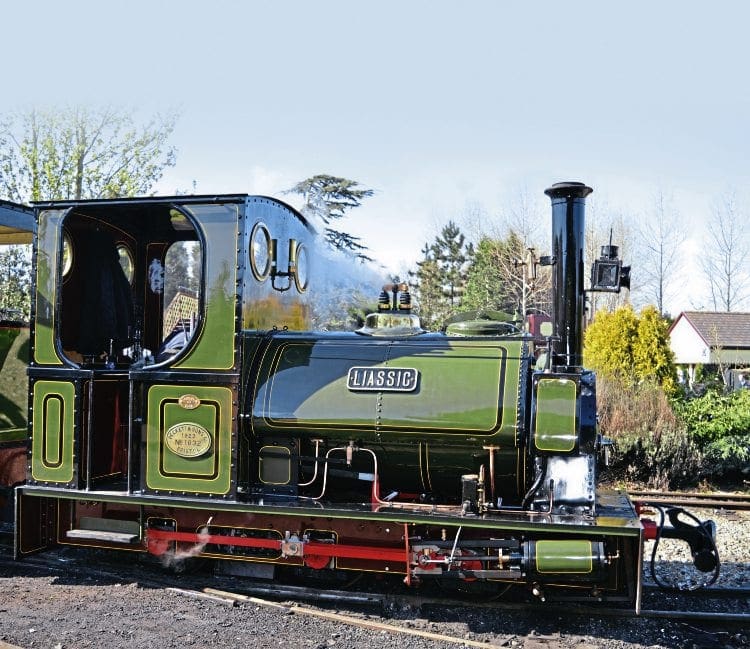
It is always welcome to witness the return to steam of a locomotive design whose school was previously unrepresented on the domestic operational preservation scene. This is no less the case when the individual locomotive concerned spent a long period away from our shores and was thought by many commentators to be never likely to return, let alone be seen by the domestic enthusiast in working condition once more.
The 2ft gauge 0-6-0ST Liassic recently made its public debut in restored form at the spring Statfold Barn enthusiasts’ day. The story of the basic specification to which Liassic belongs goes back to the year 1897. In that year, Peckett & Sons of Bristol supplied a long-wheelbase 0-6-0ST (No. 678) to the Stockton cement works situated close to the LNWR’s Marton Junction (near Leamington Spa) to Daventry line, to which it was connected by a standard gauge siding.
The works was owned by Charles Nelson & Co Ltd and the internal railway system was constructed to the unusual gauge of 1ft 9in. The design of this locomotive, which bore the painted-on name Gamecock was characterized by a firebox that sat between the driving and trailing axles allied to a relatively low boiler pitch of 3ft 1½in.
Read more on these articles PLUS more News and Features AND all your favourite regulars in Issue 228 of HR – on sale now!
Advert
 Enjoy more Heritage Railway reading in the four-weekly magazine. Click here to subscribe.
Enjoy more Heritage Railway reading in the four-weekly magazine. Click here to subscribe.




